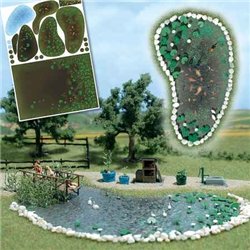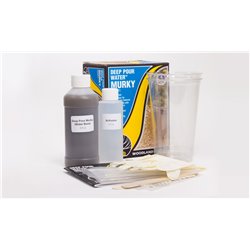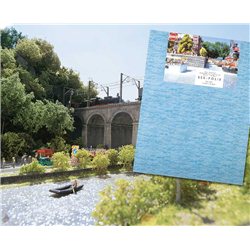You'll likely have come across the term "NEM pockets" when delving into the world of model railway couplers. But what...
No products
Product successfully added to your shopping cart
There are 0 items in your cart. There is 1 item in your cart.
Search Tips
How can I create a simple water feature on my layout?
Adding a simple water feature to a layout can be a reasonably straightforward process and can add a real interest factor to a layout. That said, it does take a little bit of planning and preparation. The first consideration will be to identify a suitable horizontal location, especially for standing water such as a pond or a mere. The ideal location will need to be a little deeper than its surroundings, perhaps 3-5mm. It will help if the depth is uneven as this can help add to the interest factor of the completed feature.
Once the location and depth have been determined then it will be useful to get a small amount of suitable substrate materials such as sand, gravel or a mixture of the two. To add a further level of realism, it could be useful to add a few larger rocks and dark green scatter to help hint at pond life. When the contents of the feature are complete then it can be covered with a suitably cut clear plastic sheet to simulate the surface. The banks of the feature can now be built up with a suitable choice of scatter. This could be useful in simulating mud or sand as required, it also has the added benefit of hiding any glue seams used to glue the clear plastic surface in place.
Further added interest could be included by adding water features such as a duck house, fountain or a large semi-submerged rock or stone. It might be possible to cut the clear plastic to fit around them at the planning stage, or with careful application, it may be possible to glue them to the clear surface, perhaps with some surrounding greenery to help blend in the feature.
Not all standing water is transparent. When simulating a fen or mere it can be useful to add a delicate dark green or green-black overspray from an airbrush. Add a delicate coat of clear to hint at reflectivity and then suitable green scatter, such as lily-pads can be added to the surface. Tufty scatter such as coarse grass or reeds can further be added to the margins to hint at a diverse aquatic environment.
Click here to receive the tips weekly in your mailbox. You can unsubscribe at any time.










